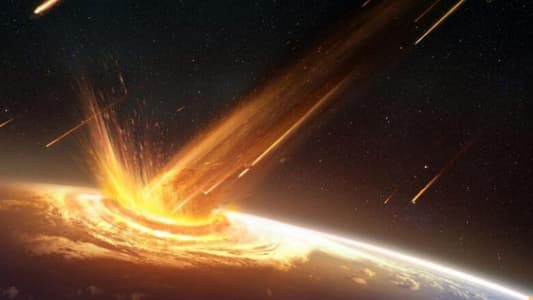Andrew Griffin wrote this article in The Independent:
Scientists have found a planet that appears to have had its atmosphere tornoff in a collision.
The world is just 95 light years from Earth. It orbits around a star named HD 172555, which is about 23 million years old, and appears to show evidence of a huge impact that happened around the star.
New research shows that the collision was likely a crash between a planet roughly the size of the Earth, and a smaller object.
The collision probably took place at least 200,000 years ago, at speeds of more than 22,000 miles per hour.
The findings - discovered by researchers from MIT, the National University of Ireland at Galway, Cambridge University, and other institutions - came after scientists found gas that seemed to give a clue about what happened to the planetary system.
It seems to indicate that the high-speed impact probably ripped away part of the bigger planet’s atmosphere. That cataclysmic event would explain why the star has the gas and dust that has intrigued scientists when it has been discovered in the past.
Researchers publish the findings in Nature, and say that it is the first detection of this kind that has been found.
“This is the first time we’ve detected this phenomenon, of a stripped protoplanetary atmosphere in a giant impact,” said lead author Tajana Schneiderman, a graduate student in MIT’s Department of Earth, Atmospheric and Planetary Sciences, in a statement.
“Everyone is interested in observing a giant impact because we expect them to be common, but we don’t have evidence in a lot of systems for it. Now we have additional insight into these dynamics.”
Scientists have long been intrigued by HD 172555, because the dust that surrounds it seems to be particularly notable. It has large amounts of unusual minerals, in grains that are much finger than astronomers would expect.
“Because of these two factors, HD 172555 has been thought to be this weird system,” Schneiderman says.
After examining the possibilities that would lead to such an unusual composition, and ruling out other possible explanations, they found that the makeup of the dust could only be explained by the collision.
“Of all the scenarios, it’s the only one that can explain all the features of the data,” Schneiderman said.
“In systems of this age, we expect there to be giant impacts, and we expect giant impacts to be really quite common. The timescales work out, the age works out, and the morphological and compositional constraints work out. The only plausible process that could produce carbon monoxide in this system in this context is a giant impact.”






TWEET YOUR COMMENT